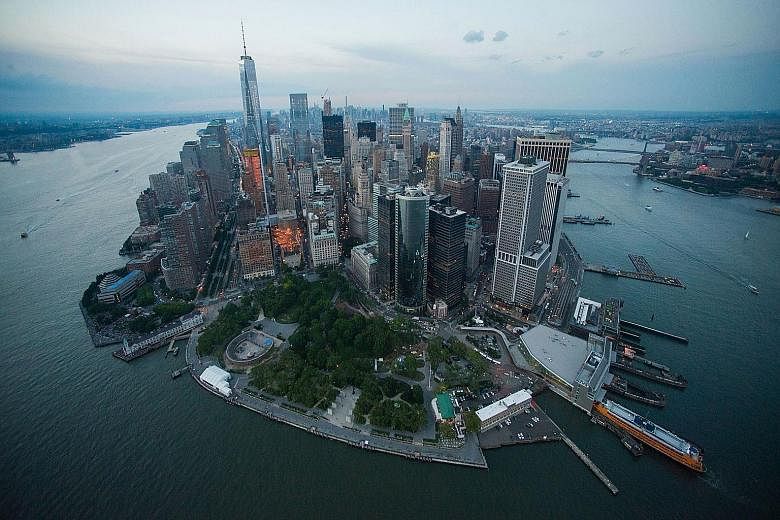NEW YORK • Super tall, super skinny and super expensive: A new generation of New York skyscrapers, some taller than the Empire State Building, are altering the world's most famous skyline.
And it is not just the masonry that is soaring to new heights. The prices have also gone stratospheric: Three apartments were sold recently for more than US$100 million (S$137 million) a piece.
Half a dozen buildings are planned or under construction in Central Park south, affording views across the park. Others are concentrated around Madison Square Park, or still farther south.
"There really is a new type in skyscraper history that is just beginning to appear," said Ms Carol Willis, historian, founder, director and curator of The Skyscraper Museum. They "will proliferate in the next five to 10 years and really change the character of the Manhattan skyline", she added.
The buildings are between 50 and 90 storeys high. Their architects are sometimes international celebrities. Those who buy are multi-millionaires from across the world who consider a "trophy apartment" in the sky an investment or a chic pied a terre. Many residents do not even live in New York full time.
-
REACHING FOR THE SKY
-
• Empire State Building: 381m (without antenna), 443m (with antenna)
• One57, 157 West 57th Street: 306m
• 125 Greenwich Avenue: 314m
• 514 11th Avenue: 335m
• 432 Park Avenue: 425m
• 111 West 57th Street: 435m
• Nordstrom Tower (unofficial name), 217 West 57th Street: 457m
0ne57 at 157, West 57th Street, known as Billionaires Row, just south of Central Park, is one prime example. Completed last year, it stands at 306m tall, has 75 storeys and 92 apartments in the clouds.
It was fleetingly the highest residential building in New York until it was dethroned by the nearly finished 432 Park, an ultra-thin cuboid of 104 apartments at 425m tall. It is higher than the Empire State Building, minus its antenna.
Another is 217 West 57th Street, projected to soar to 457m. 111 West 57th Street, due for completion in 2018 at a height of 435m, will be particularly slender and at its widest, 18.28m by 24.38m.
Several other projects have already been approved around Central Park, according to the Municipal Art Society of New York (MAS), the author of a report called "The Accidental Skyline".
But it is not so much the height, which has always defined New York, but the delicacy of the buildings that is striking. This is explained by the cost of land and New York zoning regulations, which, since 1961, have restricted the square feet of land on which property can be built, but not how high.
Developers can buy "air rights" from neighbouring, smaller buildings, allowing them to build higher and afford their clients unrestricted views. Panoramic views come with hefty price tags, so air rights are increasingly expensive in a frenetic New York real estate market.
"Views have values, and that value is reflected in the air rights in the sky," says Ms Willis.
But these skinny towers, made possible by progress in technology and building materials, in particular on how to withstand strong winds, don't make everyone happy.
The first ones to be built have already cast long shadows over Central Park, sports grounds, the zoo and a children's carousel, according to MAS. "We believe that public access to light, air and green space cannot be sacrificed," it said in the report, which has studied in minute detail the shadows expected to be cast.
"Protecting these qualities is critical to the economic health of New York City and the well being of New Yorkers," it said.
According to Ms Willis, these ultra-slender towers will remain unique to New York, given their eye-watering cost. "Until the market in New York was able to achieve US$3,000 per sq ft for construction, you didn't have any of those towers because the high price of construction was not repaid in the high selling price," she said.
AGENCE FRANCE-PRESSE

